Monday morning on the Orion started bright and early with our ship still cruising to Vanuatu. We ate breakfast on the back deck as we slowly motored amongst the vividly green islands and blue seas. As we were munching away, someone spotted a pod of sperm whales just off the bow – everyone dropped their forks and toasts, grabbed their cameras, and ran to the observation deck to watch these giants resting at the surface. The whales were doing some deep dives, spending 4-5 minutes at the surface before taking a massive dive down to hunt for food. It was incredible to see the spray off their blowholes and their brown backs bobbing at the surface.
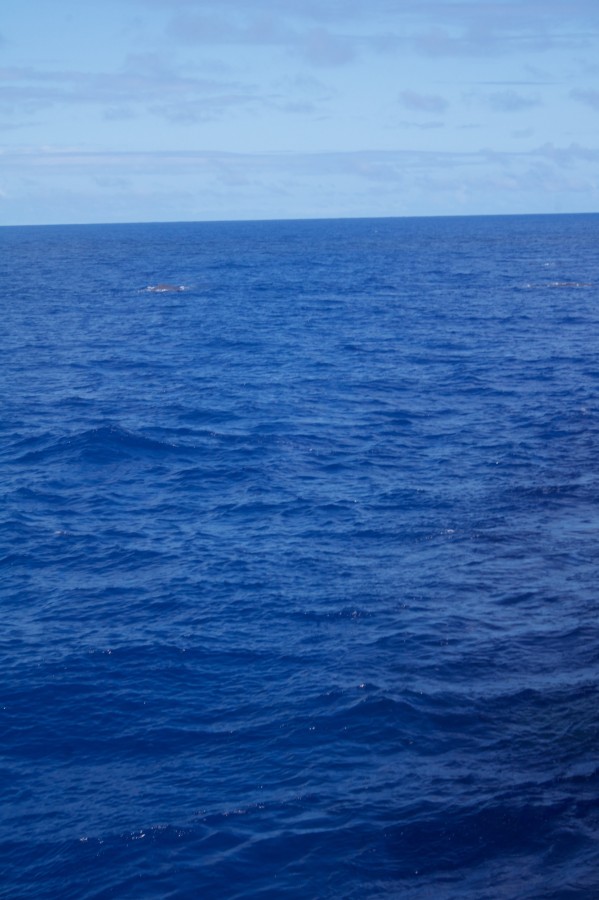
We slowed down and tried to maneuver around the animals, but ended up in the midst of them – with a handful of them just a few meters off the port side of the Orion. I couldn’t believe the up close view we now had of these mammals – you could see the wrinkles in their skin, the tiny dorsal fin, and the rounded head through the clear waters. Everyone gasped in awe as they would dive down, lifting their flukes well above the water in a graceful arc. One by one they dove down and disappeared, and we carried on to the island of Lelepa, our first stop in Vanuatu. After setting anchor, we put the zodiacs in the water and started loading up to head to shore.
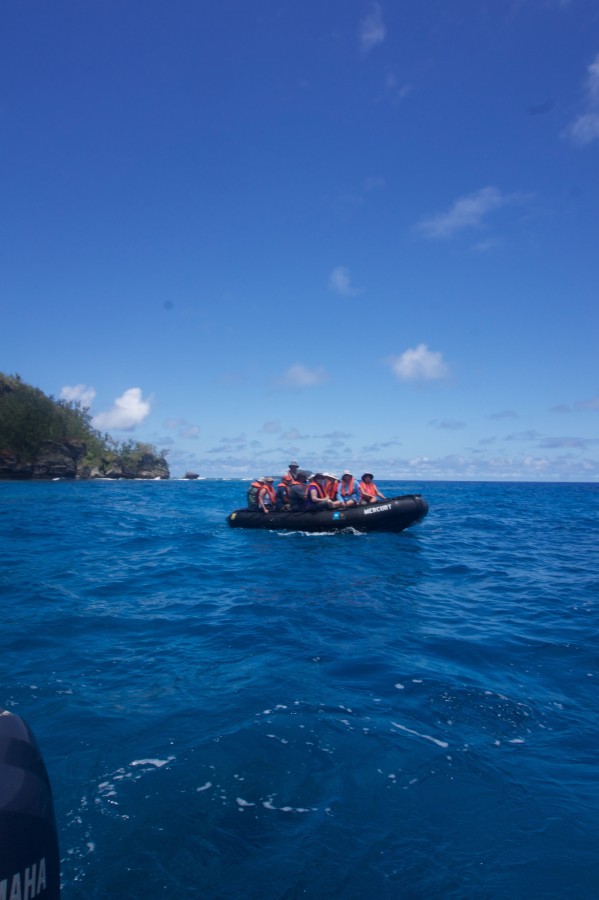
We were greeted with fresh coconuts and a dance depicting the story of how a legendary chief brought together warring tribes. From there, a local guide took us on a short hike to a spirit cave up the side of the island. Inside the vast cavern where depictions of the chief from hundreds of years ago, who united the warring tribes. It was a beautiful experience to see such an untouched part of this island’s history, and we all gazed up at the red symbols along the side of the cavern. We then headed back down to the village, where we spent a bit of time looking at the goods put out on display by the women, from shells to pig tusks and woven mats and baskets. Just before lunch we loaded the zodiacs and headed back to the ship, where we would soon be taking off again for our next destination, the island of Espiritu Santo. The rest of the afternoon was spent at sea, with lectures from the onboard naturalist and historian to keep us occupied.
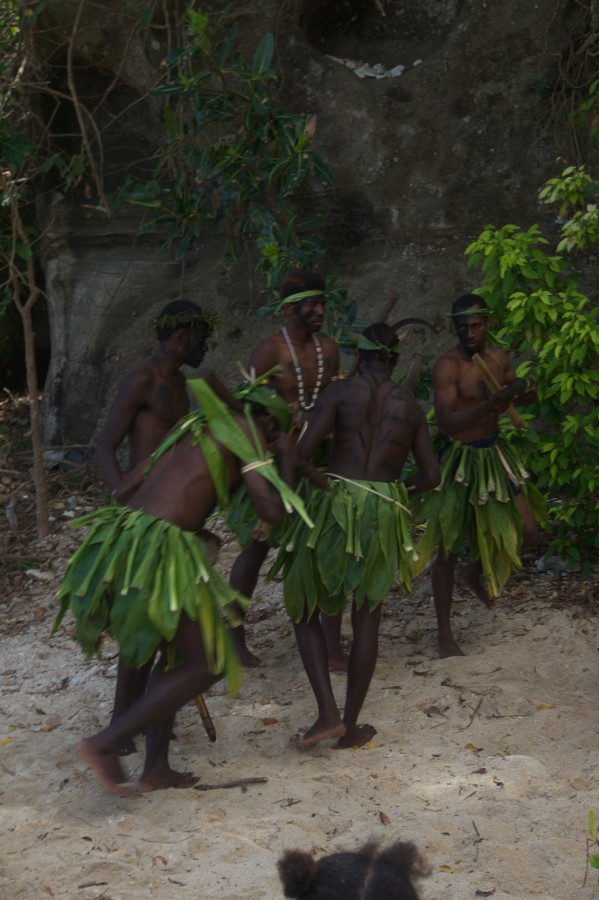
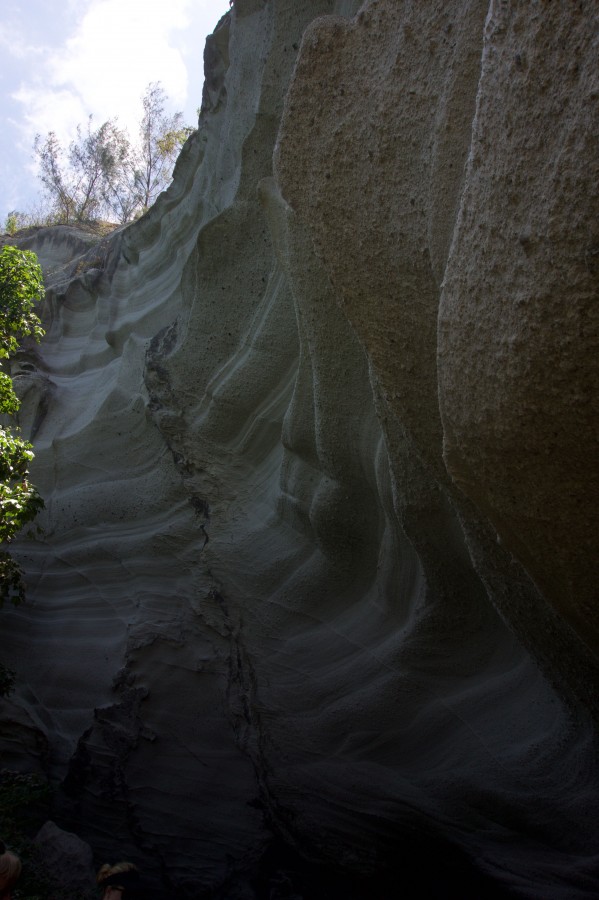
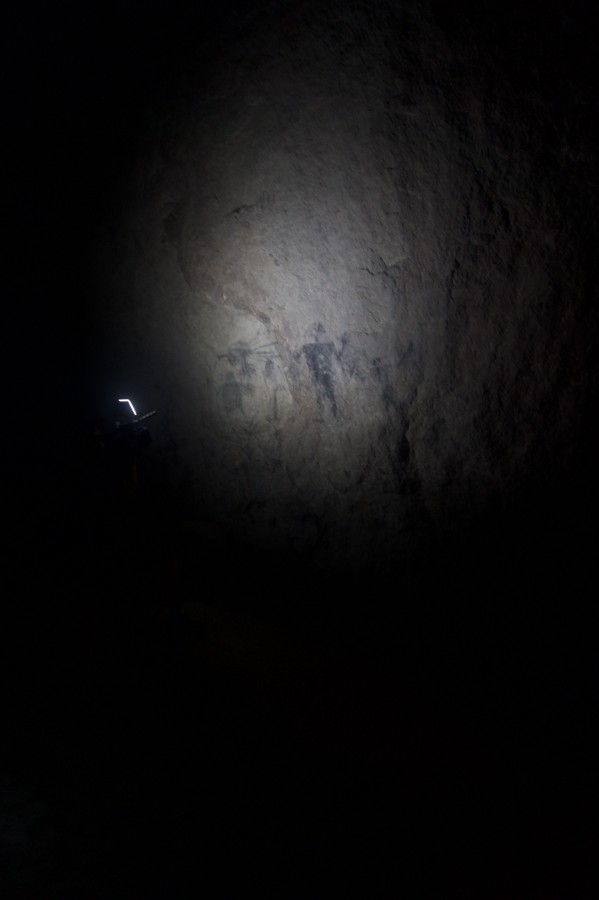
On Tuesday, the divers had an early start to our day as we were going onto Espiritu Santo to do a full day of diving with a local dive shop. We left the boat before 7 am and were met onshore by a posse of buses ready to take us and our gear into town. Upon reaching the dive shop and filling out the customary paperwork, we loaded our gear into the shop’s truck and made our way to our first dive site for the day – the renowned SS President Coolidge, which was sunk during WWII. The ship was originally a luxury ocean liner that was repurposed to be a troopship for the war. Upon arriving in Vanuatu, it was hit by an American mine as it entered through the main channel and the captain managed to maneuver the vessel near to shore, where the 5000+ crew all safely disembarked before the ship hit an unexpected reef and sank on it’s side. The wreck remains unsalvaged and a top dive destination for wreck fanatics around the world. Due to its massive size and complexity, we hired local guides to give us the best dive possible upon the wreck. Upon arriving at the site, we set up our gear and split into 3 groups based on experience level. We all donned our gear and waded into the water where we submerged below the surface, following the line to the wreck lying just off the shallow reef. What followed was one of the best wreck dives I’ve ever done, following our experienced guide through cargo holds and compartments, seeing a wide array of artifacts left on the ship, from intact Jeeps to medicine bottles, toilets, and raincoats. It was an incredible opportunity to experience history firsthand.
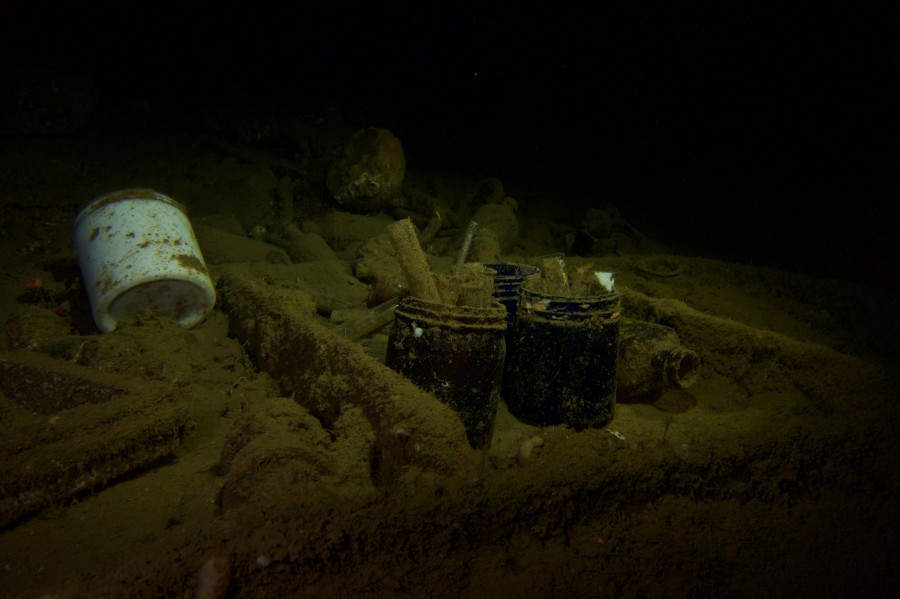
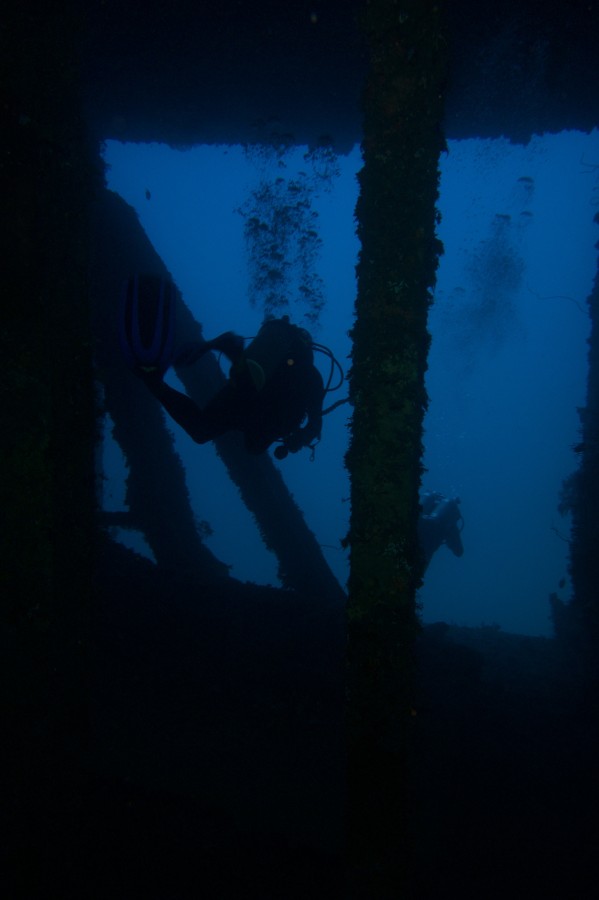
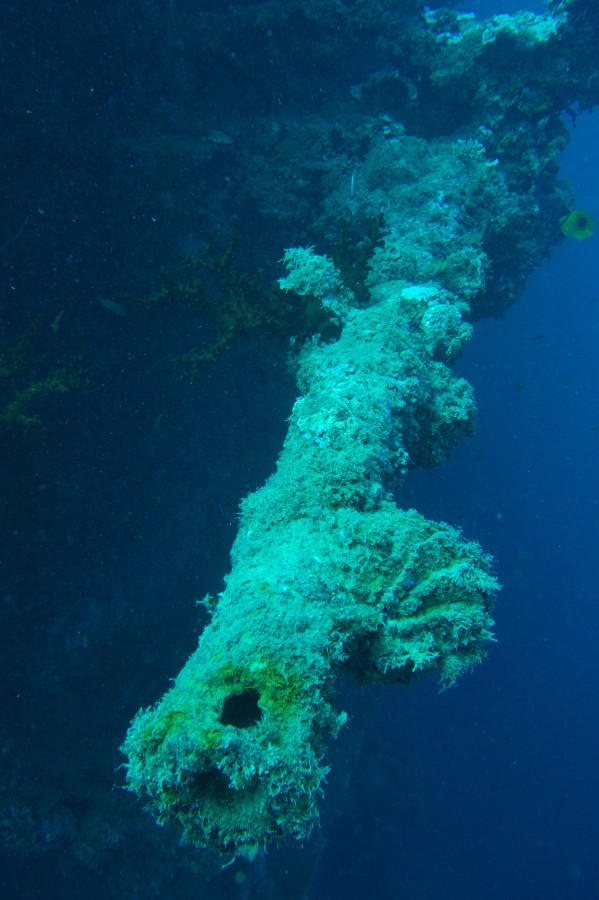
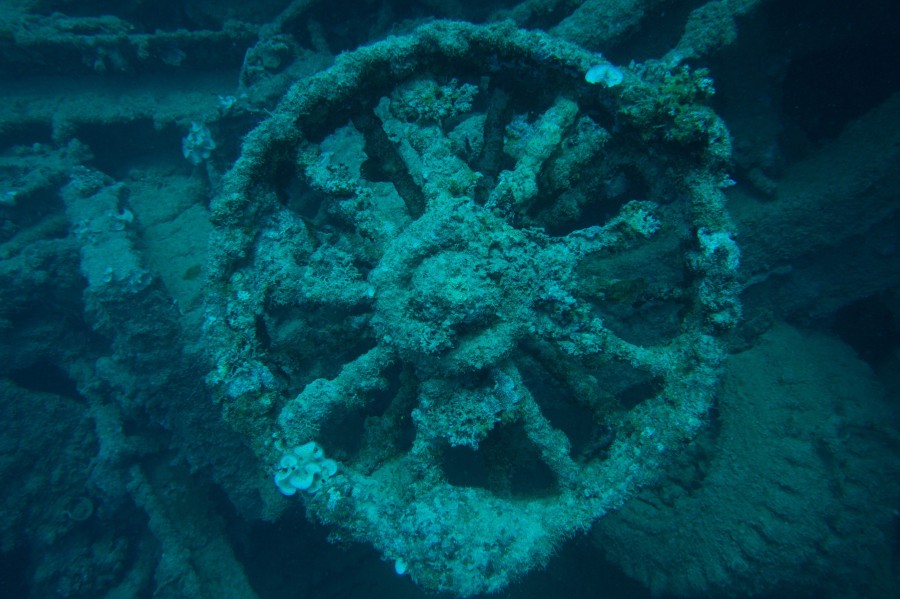
After just under an hour of dive time, we surfaced and spent a nice long surface interval eating snacks and chatting with our guides. We then loaded up the truck and headed to the second dive site, just down the road. It was a spot known as “Million Dollar Point” where following the war, the Americans dumped millions of dollars worth of equipment and vehicles into the ocean. 70 years later, the spot is a jumbled pile of wheels, metal frames, and unrecognizable parts. Again, we split into our three groups and waded into the water, where we slowly explored the massive pile of rusted metal and the surprising amount of life that now called it home. After an hour or so of diving, we headed back to shore. We quickly loaded the truck back up with all our gear and made our way back through town and to the Orion. We were on a tight schedule, as anchor was to be pulled at 4’oclock that afternoon for us to head to our next destination. We boarded the boat, rinsed our gear, and hung it all up before heading back to our rooms for showers before dinner. The day was over before I knew it, but I couldn’t have asked for better wreck dives. Like all the nights before, I went to bed exhausted from the day but excited for the adventures to come.
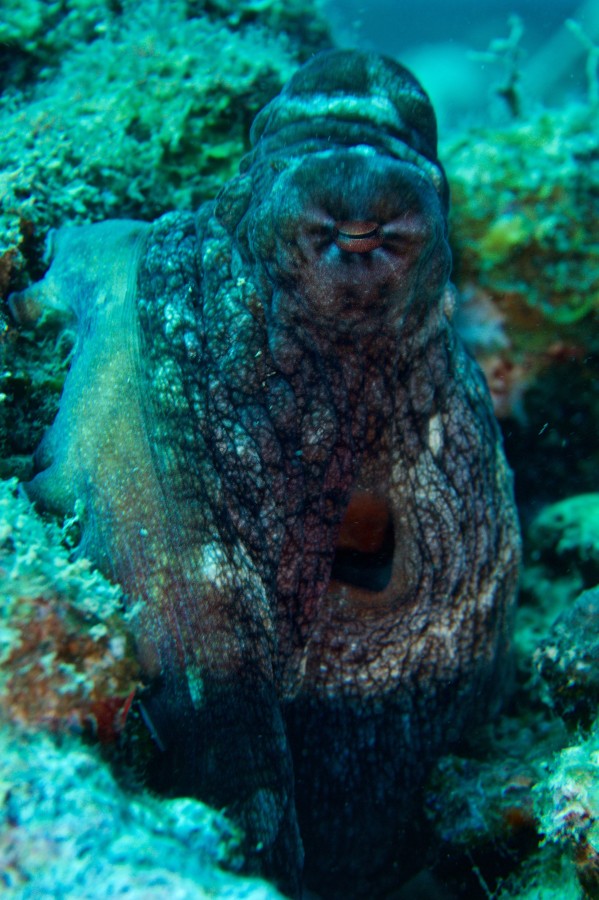

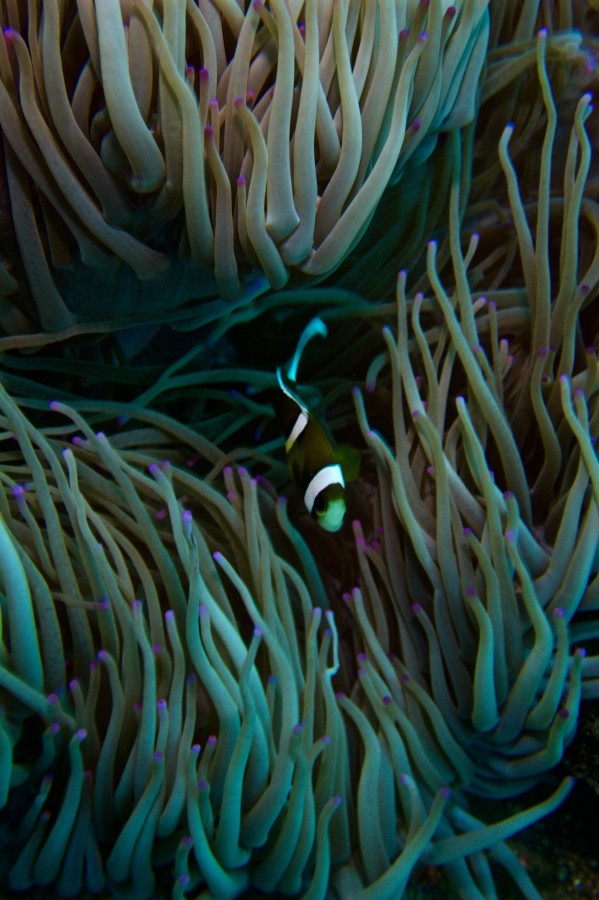
Wednesday morning we spent cruising to our next destination (we had pulled anchor the previous afternoon and spent all night at sea so we could reach the island of Tanna by mid-morning). After the usual delicious breakfast, we had a lecture to fill our time while the boat was still cruising. Once we had anchored, we quickly hopped into zodiacs with all our dive gear to fit in one last dive in Vanuatu. While most of the guests went onshore to explore a local village, a small group of divers headed out to the reef to explore what we may find under the waves.
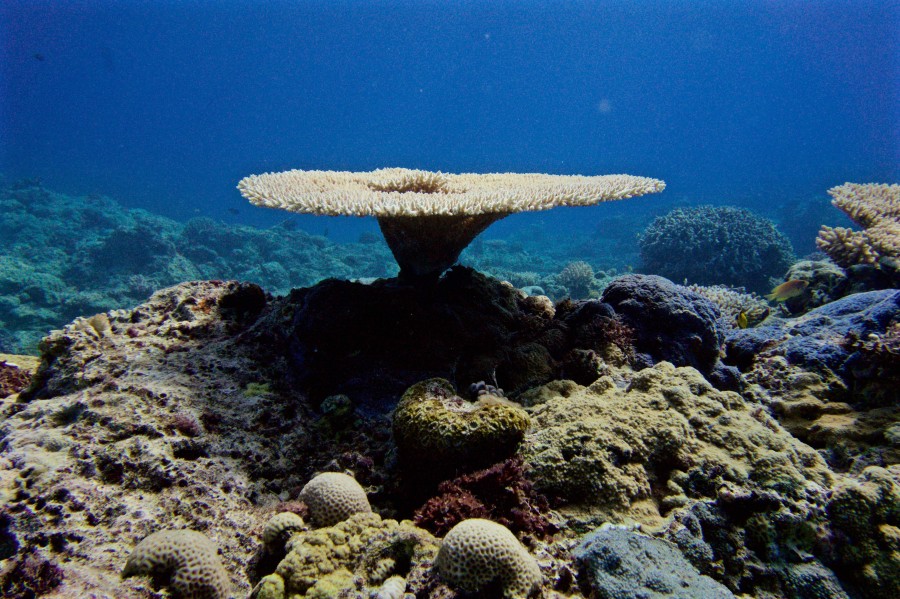
After finishing our dive, we zipped back to the Orion to put up our gear and zip back to shore so we wouldn’t miss the highlight of our trip to Vanuatu. While we had been diving, the rest of guests had spent time in the village then headed up to Mt. Yasur, a continuously erupting volcano. We rushed to meet up with them at the volcano, where we would be spending the rest of the afternoon into the evening. I have never been to a volcano before and had no idea what to expect, but was I sure excited! Once we hopped off the zodiac on the black sand beach on Tanna, we were picked up by trucks to transport us to the volcano. We spent 45 minutes bumping in the back of a truck as we headed up the island on a two-track path through lush jungle.
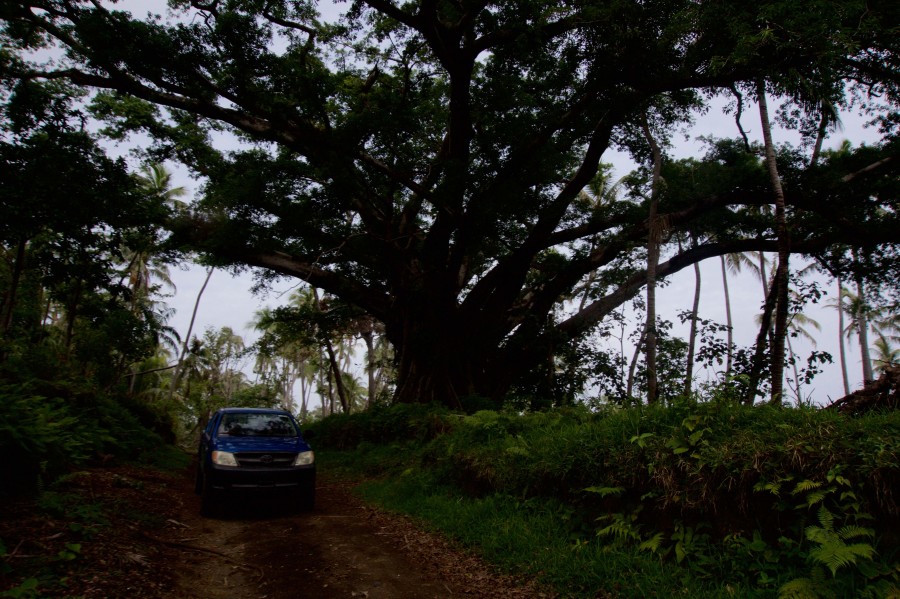
It was just about the most adventurous experience I could have asked for, with our spirits rising as we got closer and closer to the caldera. The lush jungle gave way to a vast expanse of grey ash which rose up to the massive volcano, continuously spewing clouds of steam, ash, and smoke. We hopped out of the trucks and began the short walk up the side of the volcano to the rim, where we could see down into the crater. Inside, bursts of embers sporadically sprayed up into the sky.
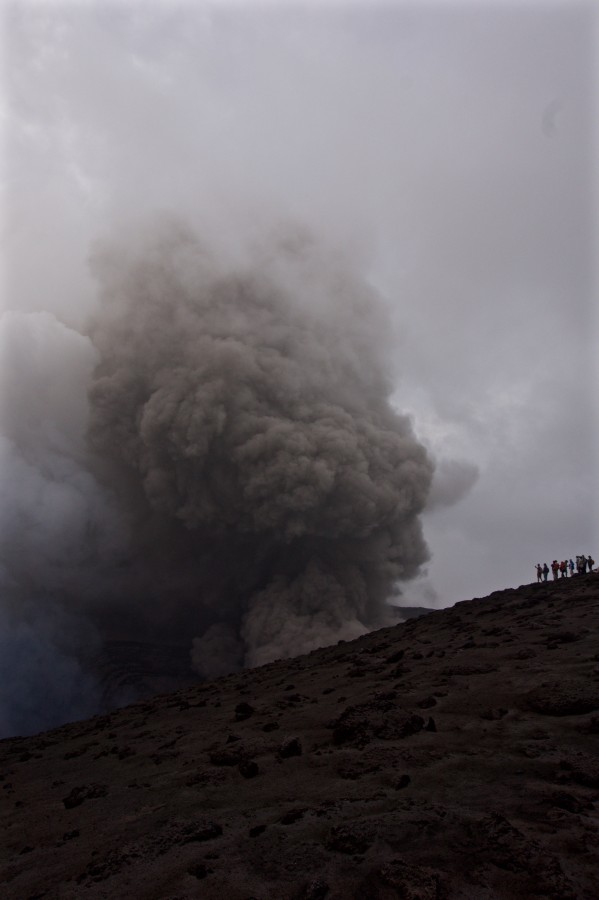
The experience was absolutely breathtaking. The caldera was massive and you could often feel the force of the shock waves with each round of eruptions. There was a continuous rumble from deep within, which much reminded me of the way the ocean sounds when waves break on a rocky shore. We all sat and stared in awe at the natural wonder in front of us, feeling quite small and insignificant in comparison. We sat and watched the volcano as the afternoon turned to dusk. As the sun’s light slowly faded, the most amazing transformation happened in the caldera – where plumes of grey and brown smoke, ash, and steam had been bursting out in voluminous clouds during the daylight, a bright red glow was added to the mix and the light faded. You could now see the embers burst out in bright red with each eruption, adding a completely new aspect to the experience. It was like a natural fireworks show, with showers of beautiful sparks soaring high into the sky intermittently.
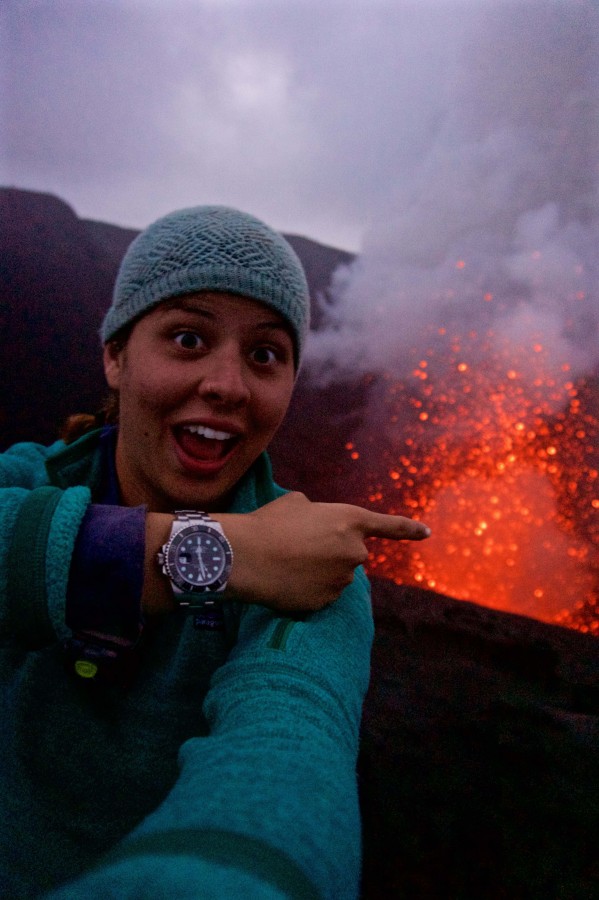

We sat for another hour or so, captivated by the beauty and power of the volcano, each of us absorbed in the dazzling display before us. Slowly, we all trickled back down the volcano and were shuttled back to the Orion, covered in ash from the eruptions. Quick showers were had before another delicious dinner and bed.
Overnight we had pulled anchor and started the journey from Vanuatu to Fiji. We would spend all day Thursday at sea, so we had lectures from the onboard naturalist, anthropologist, photographers, and historian to give us some idea of what to expect in Fiji. Like the other two days at sea, what was expected to be a long and tedious day turned out to be a fast and engaging day of lectures and learning.
Friday morning was spent cruising still, making it to Beqa Island by late morning. We were welcomed to Fiji by another pod of false killer whales, which spanned the horizon around the Orion as we cruised closer to Beqa. Upon setting the anchor, the divers had an early lunch so we could go out and explore the local reef. We loaded the zodiac with our gear and headed to a reef the guides thought would be decent based on the charts. As we cruised in, we spotted a local dive boat heading to a location in the lagoon. Curious, we headed over to the them and asked if we could dive on the same reef as the local boat. We were warmly welcomed to dive at the site, being told by the boat operator that the reef was known as “Twin Sisters” as it was two massive coral bommies that rose up from the lagoon. We all hopped in the water and cruised around the reefs, captivated by the bright soft corals, sea fans, anemones, and nudibranchs adorning the walls.
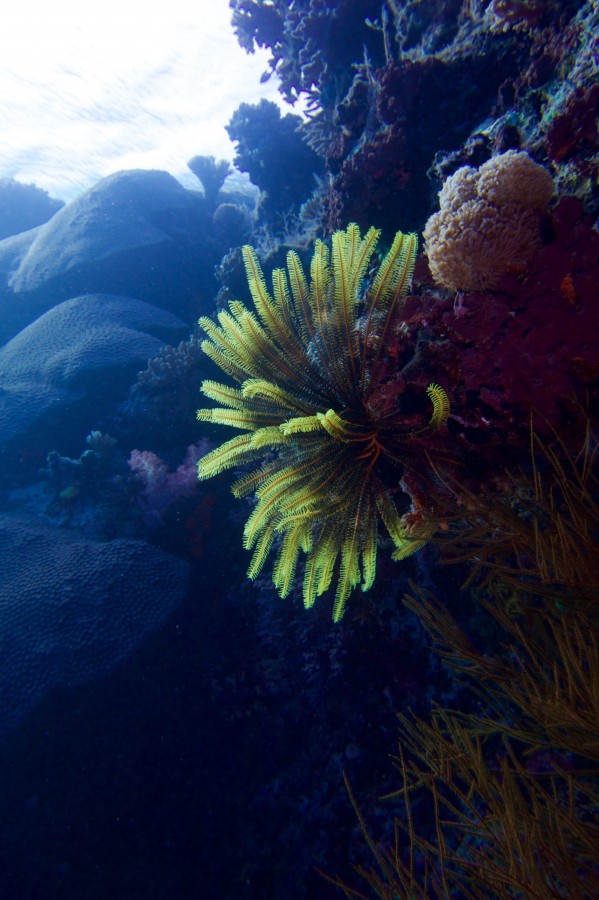
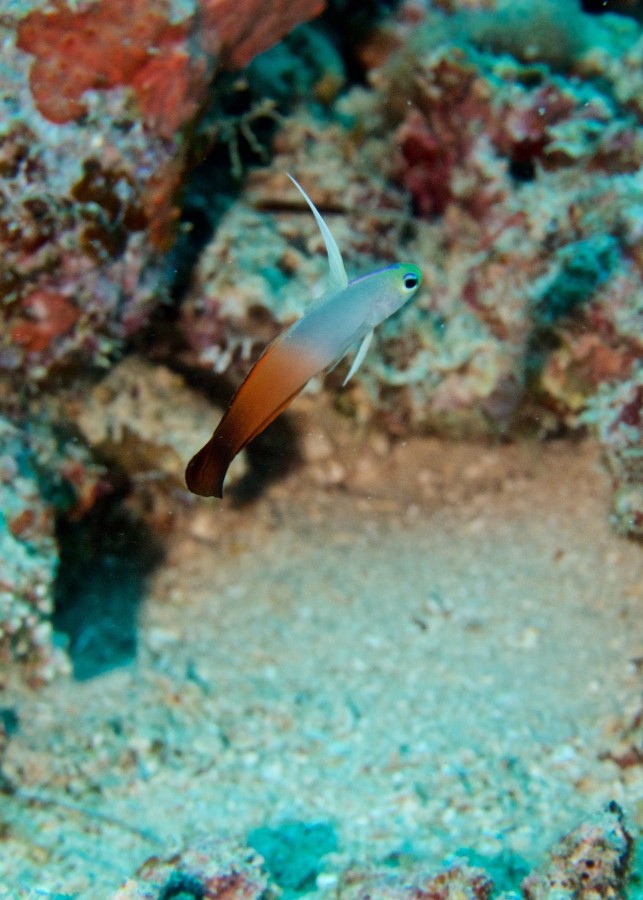
It was a stellar dive and we all surfaced beaming because of the neat things we had seen. We rushed back to the Orion to drop off gear and then quickly headed to Beqa Island to partake in the welcome party hosted by the local village. In addition to traditional songs and dances put on by the locals, we all had the chance to try some local food and kava before the main event of the evening. According to legend, the people from the island of Beqa were given the gift of firewalking by the demigods, and they had prepared a firewalking ceremony for us that evening. One of the ladies from the village explained to us the history of firewalking and described the process the men went through to get the fire prepared for the ceremony. A group of men shifted around the logs and coals and then the walking began – after being called by the elder of the group, men individually walked slowly over the red hot embers, much to our utter amazement. The ceremony continued as day turned to dusk and after we had been sufficiently stunned by the feats, the elder concluded the ceremony and we headed back to the Orion. It was the warmest of welcomes to Fiji and I was excited for my few remaining days on the Lindblad Expedition.
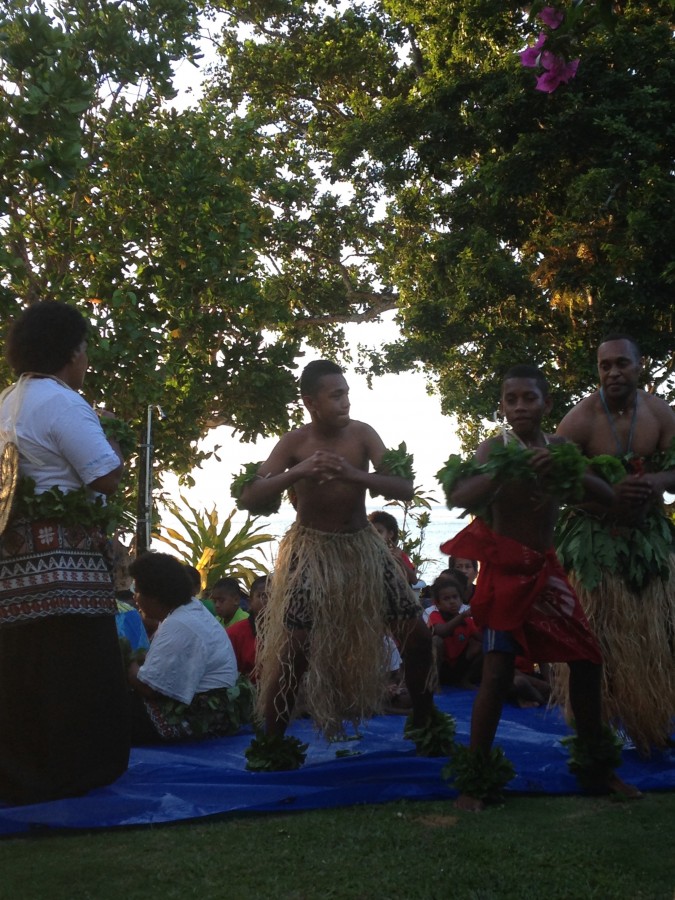
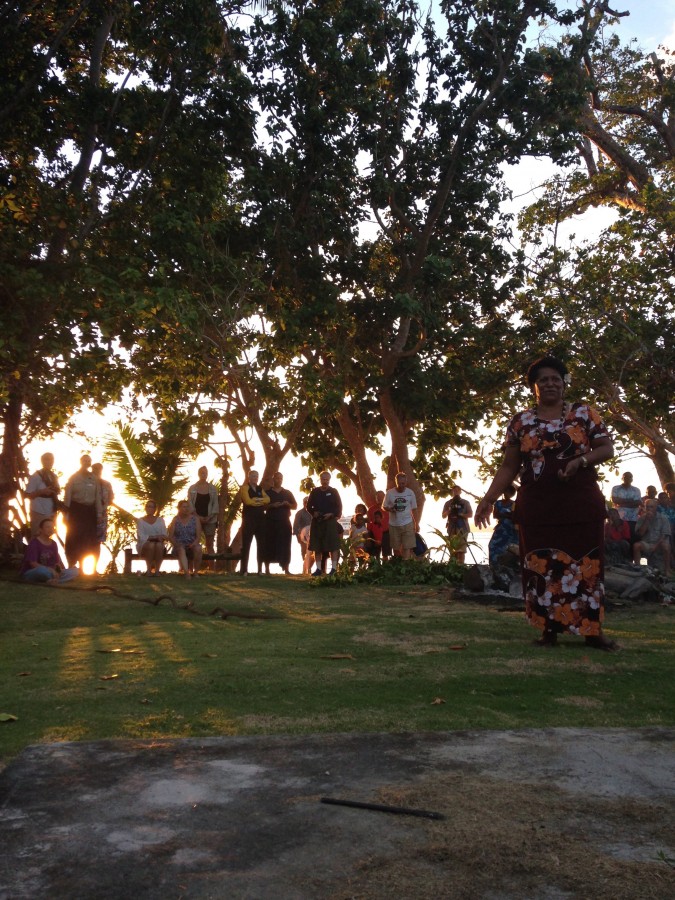
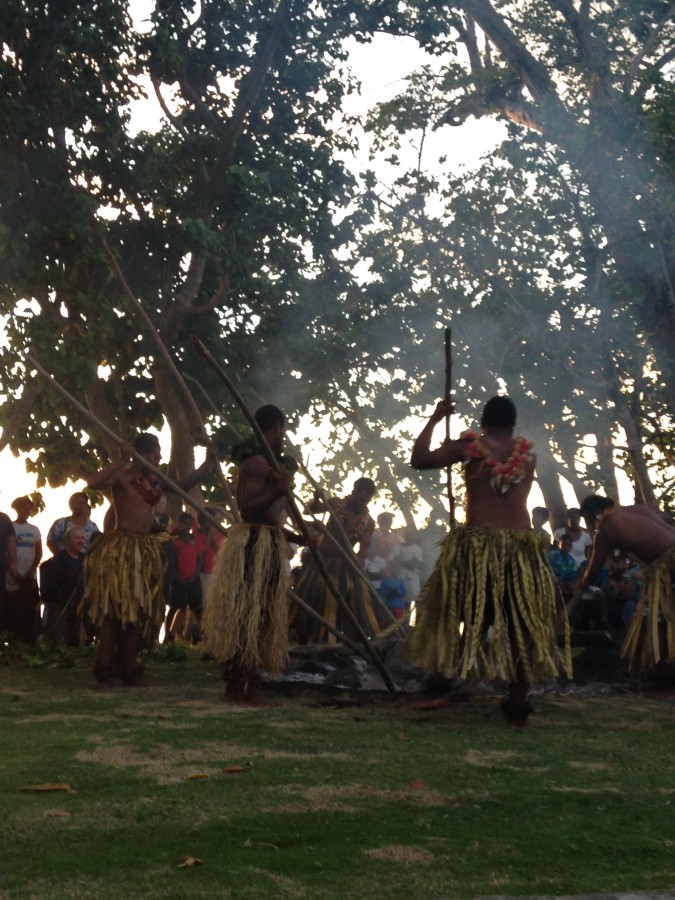
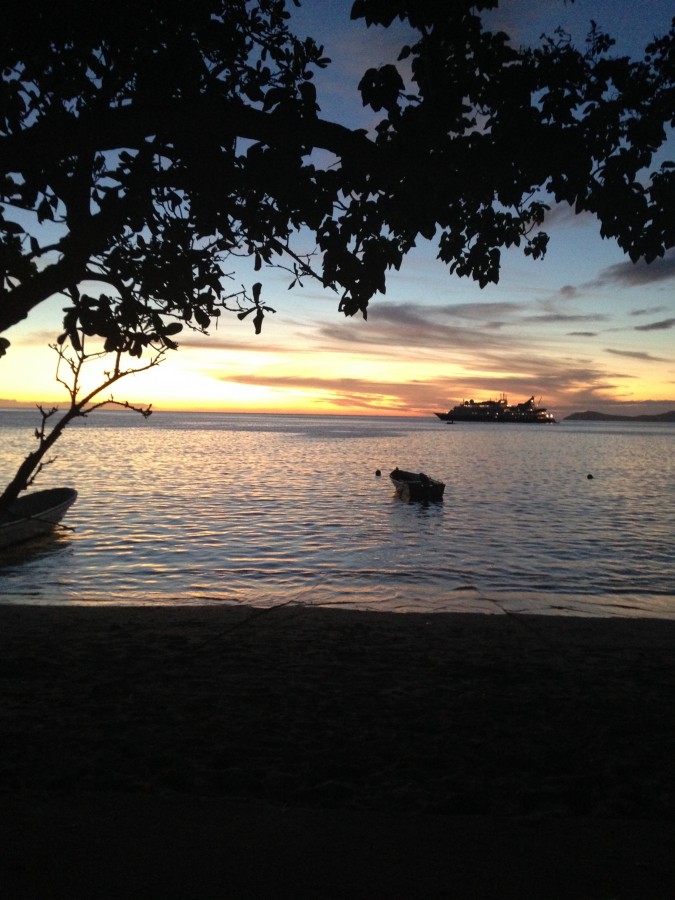
Saturday we woke up to the ship once again in transition to the next island of Taveuni. We reached our anchor spot by late morning and after a dive briefing, packed up the zodiac to do two dives on the local reef. The first dive had a ripping current, but we had a small group of experienced divers, so it was not too worrisome. We drifted with the flow, poking around the reef in the few areas that were protected from the current. I even saw one of my favorite fish, a juvenile rock mover wrasse, which put me into quite the good mood!
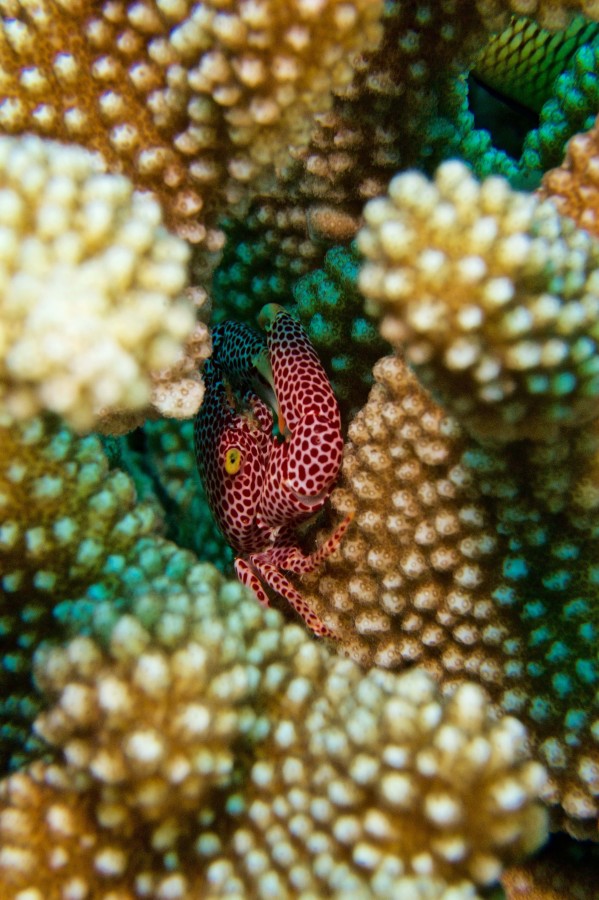
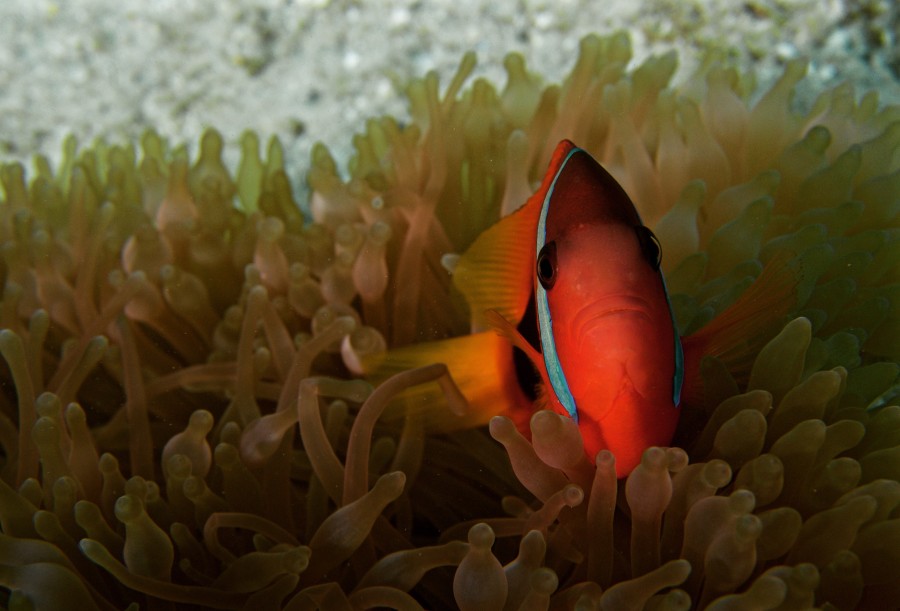
After surfacing and boarding the zodiac, we motored to a protected area to do our surface interval. We ended up hopping in for our second dive where we had our surface interval, which turned out to be a lovely sloping wall with nice bursts of coral among the sand. It was a much more mellow dive and we were given ample opportunity to search for critters hiding in the reef.
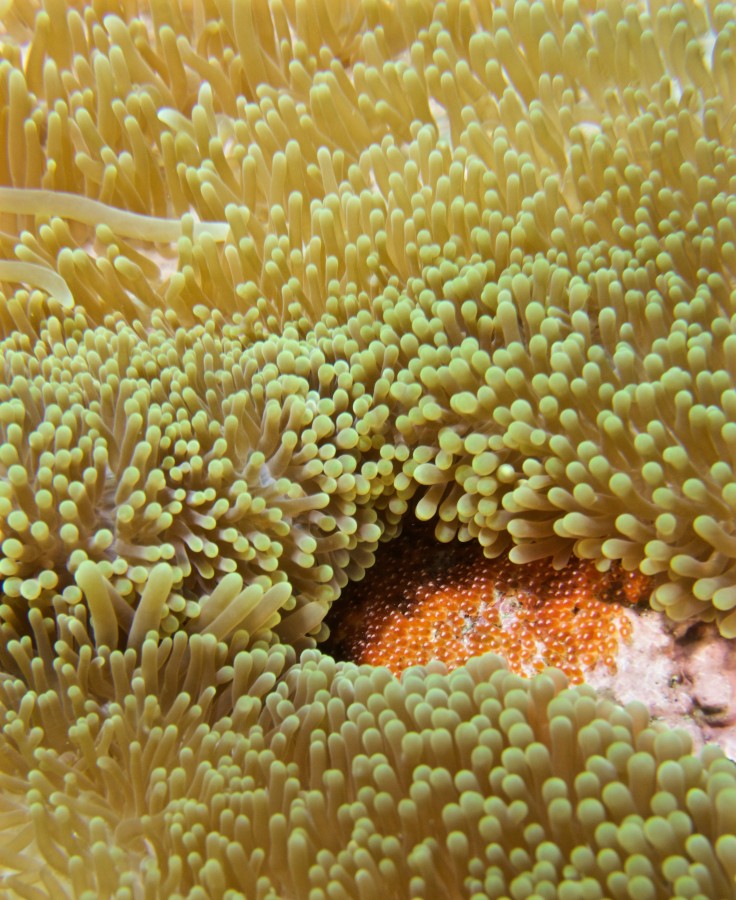
We finished the second dive in the mid-afternoon and took a small break on board the Orion. Due to popular demand, we had slated a night dive. We rounded up the rest of the divers and before I knew it, were back on the water heading to our third dive of the day. We were just a short trip away from the Orion, and as the sun set below the island, we back-rolled into the water. What started out as a bit of an unsightly dive site turned into a weird and wacky treasure hunt. We ended up spotting a tiny robust ghost pipefish, orangutan crabs, decorator crabs, basket stars, and juvenile lionfish (to name the weirdest of things we saw).

I was blown away by all the neat things we found, completely enthralled by the wacky creatures that came out at night. Back on board, we had a beautiful gourmet dinner specially cooked for us, before I soundly fell asleep in my room.
Sunday was our last chance to dive on the Orion, and I was quite sad to think that my time on board was quickly winding down. We had stayed overnight in Taveuni and it gave us time for two last dives that morning. After our dives the day before, we had a much better idea of the reefs and were able to pick two really lovely sites. The first was a sloping, coral rubble wall with minimal current. Although the rubble wasn’t much to look at, there was plenty to find hiding amongst the broken bits. I saw several nudibranchs, some colorful reef fish, gobies, and pufferfish. After our surface interval, we moved to another reef just a short ride away. It was a massive coral bommie that was surrounded by sand in a wide channel. We slowly cruised around the coral, seeing a shark, anemonefish, lobster, gobies, scorpionfish, and eels. It was a beautiful dive to finish our trip. Back on board, we laid our dive gear out to dry on the dive deck, saddened that our dives were over. We had a final lecture that afternoon and then to finish the day, we had a cocktail party followed by delicious dinner. It was weird to know that it was our last dinner on the Orion and I savored every moment and every bit. After dinner finished, we headed back to the lounge for drinks and laughter, reminiscing over some of the more hilarious moments of the trip, staying up quite a bit later than I was used to. Everyone gradually trickled to bed and I headed outside for one last look at the starry sky away from civilization. I got a few hours of sleep in before waking up for the last sunrise on board, a beautiful display of colors illuminating the early morning sky.
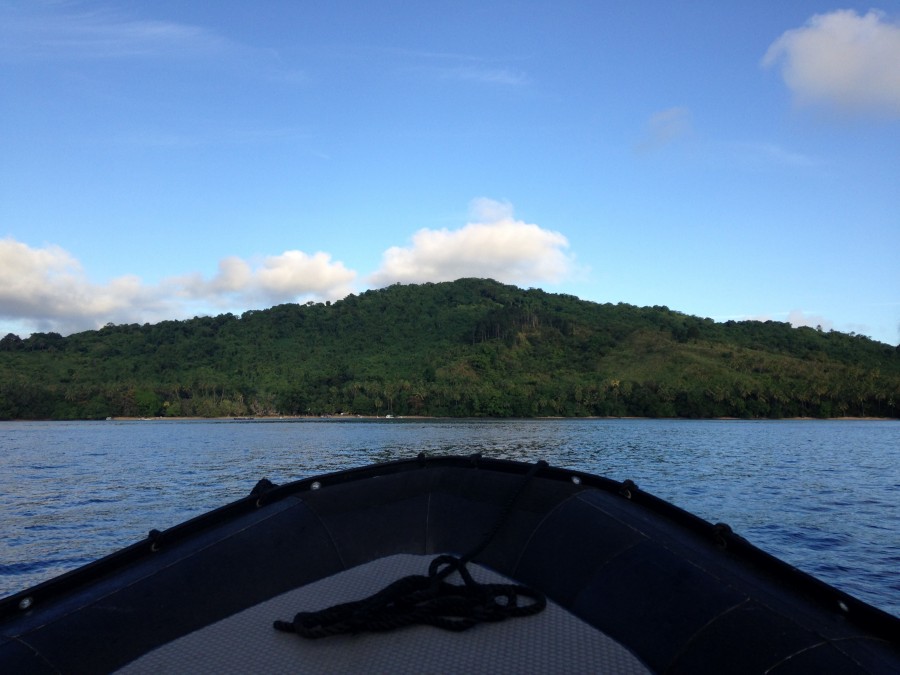
Monday morning was spent finalizing our packing, eating a breakfast and disembarking. We said our long farewells to the crew on board and loaded up into the vans that would take us around Latouka and Viti Levu for the day. It was surreal to think the trip was already over and I was quite sad to be leaving the Orion after all the adventures we had over the last 10 days. We spent the day traveling to a village called Navala, where the people where still living very much according to the traditional Fijian lifestyle. We participated in a kava ceremony with the chiefs of the village, where we were formally welcomed to Navala and given permission to be there. We then had the chance to look around, talking with the locals and even interrupting school to interact with the children and learn about their way of life.

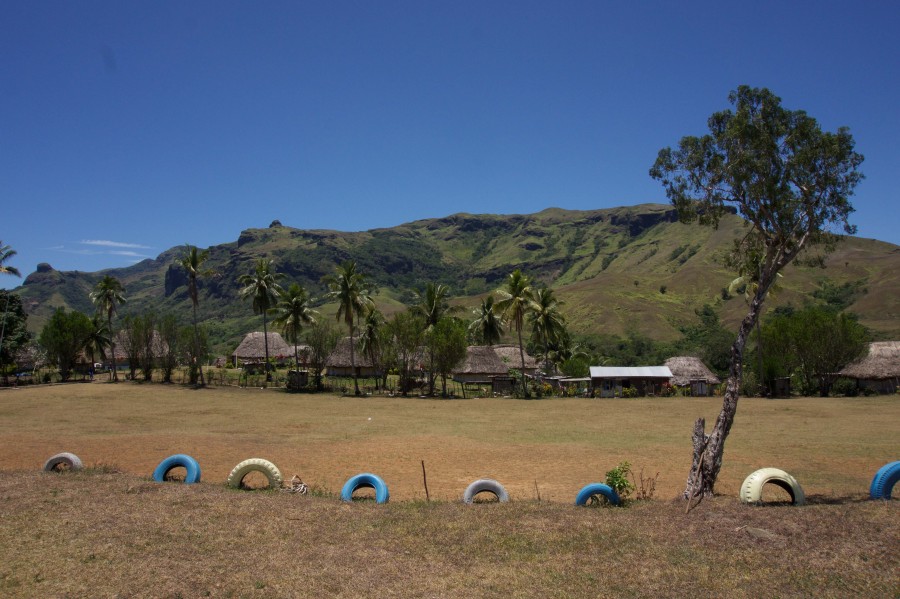
After a few hours, we loaded back into the buses and headed back to Latouka, where we were dropped in Port Denarau, officially the end of our Lindblad trip. We said our last farewells to the crew, grabbed our bags, then headed to the hostel I had booked for the evening. After settling into our hostel, Ben and I headed out to dinner with my new host for the next week in Fiji, a woman by the name of Gabi who was the marketing manager for the Barefoot Resorts. It was a lovely evening of drinks and dining, and I was already looking forward to my next adventure.
My trip onboard the National Geographic Orion was full of so many unexpected adventures. It was a once in a lifetime opportunity to see a part of the South Pacific I had always dreamed of visiting. I learned so much from the crew onboard, from the ecology of the area to the unique anthropology of each country, to the rich WWII history of the region. The 10 days flew by with lots of good laughs and incredible sights.